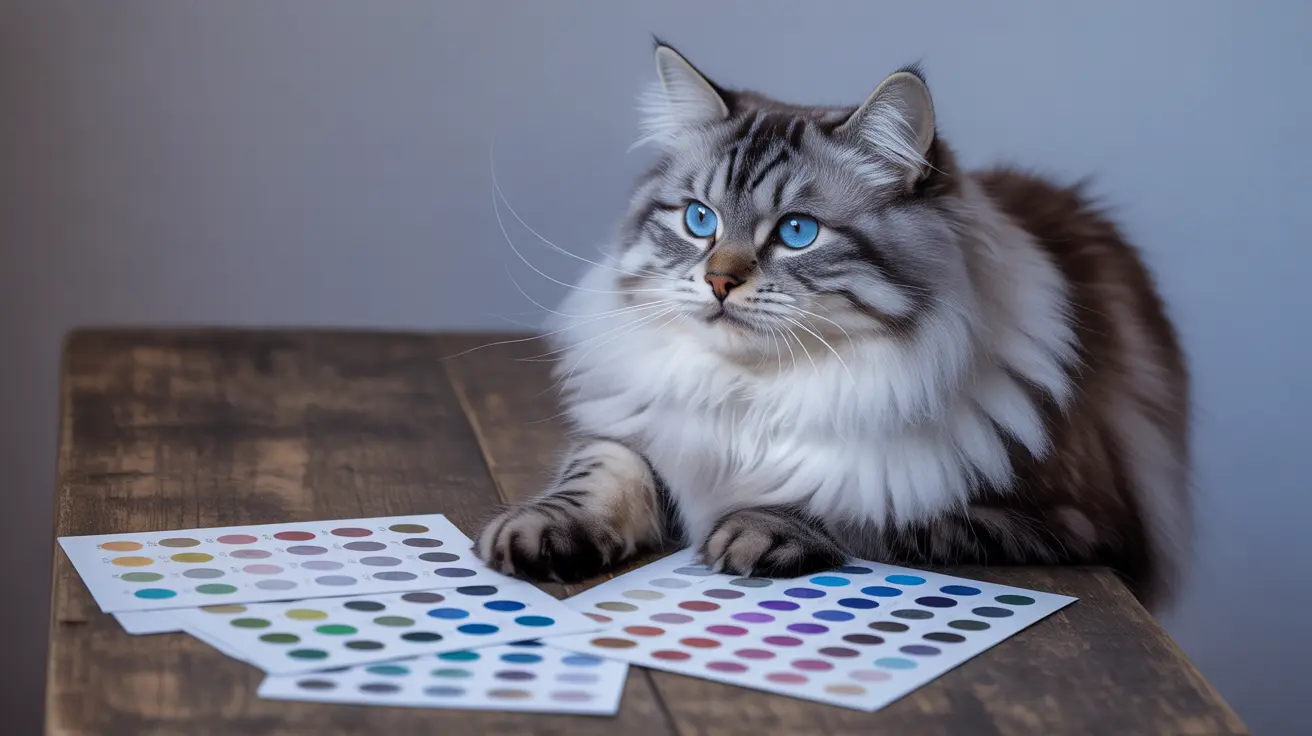The fascinating world of cat eye color genetics reveals the intricate mechanisms behind those mesmerizing feline gazes. From the striking blue eyes of Siamese cats to the deep copper hues of Abyssinians, understanding how genetics determine cat eye colors offers valuable insights into feline heredity and development.
Every kitten begins life with blue eyes, but as they mature, a complex interplay of genes and melanin production transforms their eye color into the diverse spectrum we see in adult cats. Let's explore the genetic factors that create these stunning variations and what they tell us about our feline friends.
The Fundamentals of Cat Eye Color Development
At its core, cat eye color is determined by the amount and distribution of melanin in the iris. This pigment-producing process is controlled by specific genetic instructions passed from parent cats to their offspring. The more melanin present, the darker or more intense the eye color becomes.
Melanocytes, the specialized cells responsible for producing melanin, are found in both the stroma and epithelial layers of the iris. The concentration and activity of these cells directly influence the final eye color, creating everything from pale blue to rich copper tones.
The Role of Genetics in Eye Color Formation
Multiple genes work together to control melanin production and distribution in cat eyes. Some of these genes are also responsible for coat color, creating fascinating correlations between a cat's fur and eye appearance. However, this relationship isn't always straightforward - a black cat might have green, gold, or copper eyes.
Certain breeds carry specific genetic markers that determine their characteristic eye colors. For instance, Siamese cats retain their blue eyes into adulthood due to temperature-sensitive genes that affect pigment production.
Understanding Color Variations and Special Cases
One of the most intriguing aspects of cat eye genetics is heterochromia - the occurrence of two different colored eyes in the same cat. This condition is often linked to the white spotting gene and is particularly common in white cats.
The range of possible eye colors includes:
- Blue (minimal melanin)
- Green (combination of light melanin and lipochrome)
- Amber/Yellow/Gold (moderate melanin levels)
- Copper (high melanin concentration)
- Hazel (mixed pigmentation)
Health Implications and Genetic Links
While eye color itself doesn't typically affect a cat's vision, certain genetic combinations can indicate potential health concerns. White cats with blue eyes have a higher likelihood of congenital deafness, due to the same genes that influence their coloring affecting the development of inner ear structures.
Regular monitoring of eye color is important, as sudden changes in adult cats could signal underlying health issues requiring veterinary attention.
The Development Timeline
Kittens experience a predictable pattern of eye color development. Their initial blue eyes begin changing around 4-6 weeks of age, with permanent color typically established by 12 weeks. This transformation provides a fascinating window into the activation of genetic instructions controlling pigment production.
Frequently Asked Questions
How do genetics determine the different eye colors in cats?
Genetics determine cat eye colors through genes that control the amount and distribution of melanin in the iris. Multiple genes work together to influence pigment production, resulting in various colors from blue to copper.
Why are all kittens born with blue eyes and when do their eye colors change?
Kittens are born with blue eyes due to an initial lack of melanin in their irises. Their permanent eye color develops between 4-12 weeks of age as melanin production increases and genetic instructions activate.
What causes some cats to have odd-colored or heterochromatic eyes?
Heterochromia in cats is typically caused by the white spotting gene or other genetic factors that affect melanin production differently in each eye. This condition is especially common in white cats.
Is there a connection between a cat's eye color and its breed?
Yes, certain breeds have genetically predetermined eye colors. For example, Siamese cats typically have blue eyes, while Russian Blues are known for green eyes due to their specific genetic makeup.
Can certain eye colors in cats indicate potential health issues like deafness?
Yes, particularly in white cats with blue eyes, who have a higher risk of congenital deafness. This connection exists because the genes affecting eye color can also impact the development of hearing structures.
Conclusion
The genetics behind cat eye color represents a fascinating intersection of heredity, development, and feline health. Understanding these genetic mechanisms not only helps us appreciate the beautiful diversity of cat eyes but also aids in identifying potential health concerns and breeding considerations.






